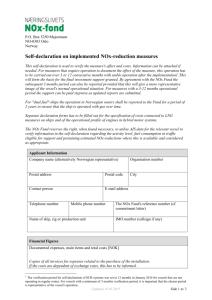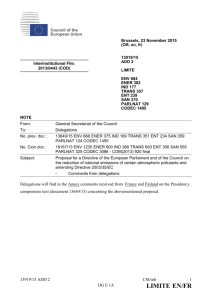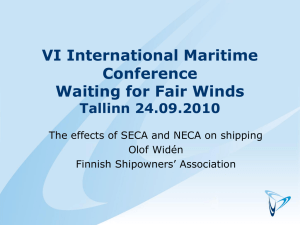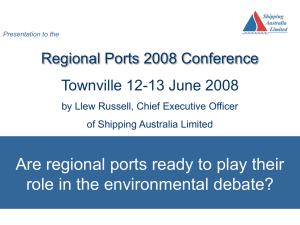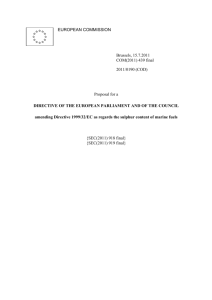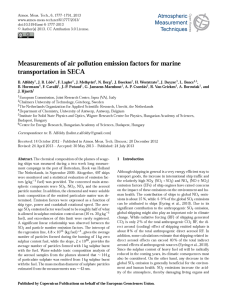Brief summary on the revision of MARPOL Annex VI
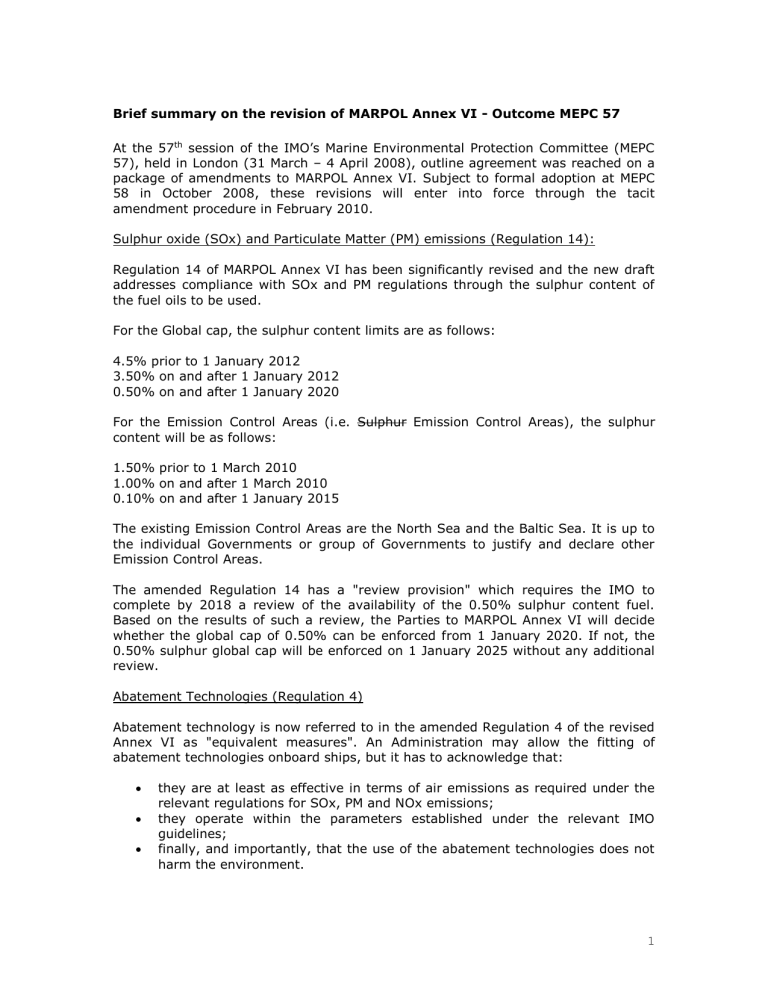
Brief summary on the revision of MARPOL Annex VI - Outcome MEPC 57
At the 57 th session of the IMO’s Marine Environmental Protection Committee (MEPC
57), held in London (31 March – 4 April 2008), outline agreement was reached on a package of amendments to MARPOL Annex VI. Subject to formal adoption at MEPC
58 in October 2008, these revisions will enter into force through the tacit amendment procedure in February 2010.
Sulphur oxide (SOx) and Particulate Matter (PM) emissions (Regulation 14):
Regulation 14 of MARPOL Annex VI has been significantly revised and the new draft addresses compliance with SOx and PM regulations through the sulphur content of the fuel oils to be used.
For the Global cap, the sulphur content limits are as follows:
4.5% prior to 1 January 2012
3.50% on and after 1 January 2012
0.50% on and after 1 January 2020
For the Emission Control Areas (i.e. Sulphur Emission Control Areas), the sulphur content will be as follows:
1.50% prior to 1 March 2010
1.00% on and after 1 March 2010
0.10% on and after 1 January 2015
The existing Emission Control Areas are the North Sea and the Baltic Sea. It is up to the individual Governments or group of Governments to justify and declare other
Emission Control Areas.
The amended Regulation 14 has a "review provision" which requires the IMO to complete by 2018 a review of the availability of the 0.50% sulphur content fuel.
Based on the results of such a review, the Parties to MARPOL Annex VI will decide whether the global cap of 0.50% can be enforced from 1 January 2020. If not, the
0.50% sulphur global cap will be enforced on 1 January 2025 without any additional review.
Abatement Technologies (Regulation 4)
Abatement technology is now referred to in the amended Regulation 4 of the revised
Annex VI as "equivalent measures". An Administration may allow the fitting of abatement technologies onboard ships, but it has to acknowledge that:
they are at least as effective in terms of air emissions as required under the relevant regulations for SOx, PM and NOx emissions;
they operate within the parameters established under the relevant IMO guidelines;
finally, and importantly, that the use of the abatement technologies does not harm the environment.
1
From a ship operator’s point of view, this last element is very important since under the current Annex VI provisions, it is the ship’s obligation to demonstrate that the use of abatement technology is not harmful to the environment.
Nitrogen oxide (NOx) emissions (Regulation 13)
Regulation 13 of the revised Annex VI carries the following new elements:
Existing engines onboard ships constructed between 1 January 1990 and 31
December 1999, with a power output of more than 5,000 kW and a per cylinder displacement at or above 90 litres, will have to adopt modifications to meet the Tier I
NOx emission limitations (as for the engines onboard ships constructed on and after
1 January 2000).
There are a few important steps for the application of this retro-active provision:
If the engine already meets Tier I NOx emission limits, then a simple certification is sufficient.
If the engine does not meet the Tier I NOx emission limitations, it is subject to measures ONLY:
- if there is an upgrading system certified by an Administration and the certification identifies that such a system will ensure a reduction to the Tier I limits of that particular engine;
- if the upgrading system is considered commercially available 12 months after an
Administration deposits the notification on certification to IMO.
The engine would need to be upgraded at the ship’s first renewal survey after the upgrading system becomes commercially available.
In case the upgrading system is not available at the time of completion of the renewal survey (ship owner has to document that, the flag would give an extension until the next Annual Survey.
As part of the certification, the Administration should check that the upgrading system does not decrease the engine rating by more than 1%, increase the fuel consumption by more than 2% (consumption according to the test cycle set for the
NOx Technical Code) and that it has no other adverse effect on the durability or reliability of the engine.
Finally, in order to relate the upgrading to an acceptable cost/benefit level, this provision will use a formula on limiting the "cost" of the upgrading system as related to the reduction of NOx emission (reduction is considered the difference between the initial emission level of the engine and the Tier I limit respectively). The formula will be further assessed and probably concluded at MEPC 58 in October 2008 when the approved revision is scheduled for final adoption.
Reception Facilities (Regulation 17)
The revised Regulation 17 requires that each Party to Annex VI ensures that it provides adequate facilities for the reception of ozone depleting substances and exhaust gas cleaning residues
2
Fuel Availability (regulation 18)
There is a new provision in Regulation 18 which states that (a) each Party shall take reasonable steps to ensure proper supply of compliant fuel and (b) sets up a provision which indicates that should a ship demonstrate it was unable to buy the compliant fuel, then there should be no penalty measures taken against it. The ship will have to notify its Administration and the relevant port of call each time it cannot find the compliant fuel.
Fuel Oil Quality (regulation 18)
The two important amendments are:
a standard fuel verification procedure of fuel samples for compliance (this is
in response to many reports from ship operators on inconsistencies between the data contained in the Bunker Delivery Note and the test results from commercial samples); a decision that the IMO will send a letter inviting ISO to revisit the ISO 8217 standard for marine fuels.
3



